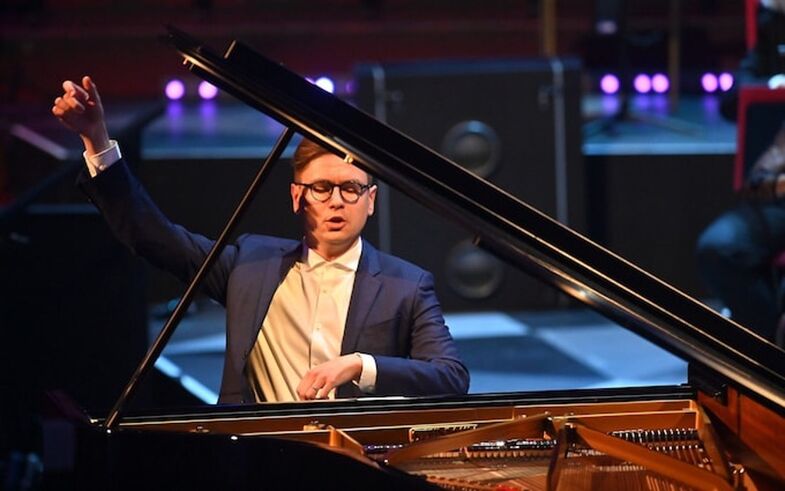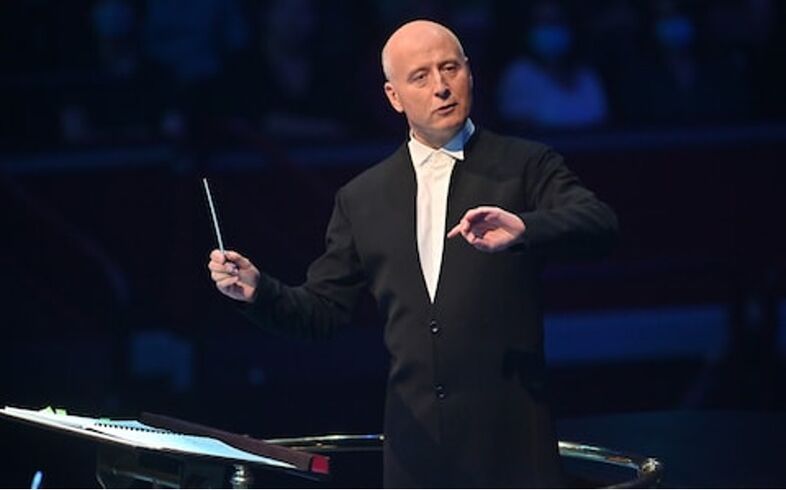Víkingur í The Telegraph
Lofsamlegur dómur um Víking Ólafsson á Proms
Að þessu sinni bregð er brugðið út af venju hér á síðunni og birtur texti á ensku. Ástæðan er hve vandasamt er að þýða tónlistargagnrýni af einu tungumáli á annað. Víkingur Ólafsson píanóleikari var einleikari á Proms-tónleikum í Royal Albert Hall í London laugardaginn 14. ágúst.
Daginn eftir skrifaði tónlistargagnrýnandi The Telegraph lofsamlegan dóm um tónleikana og gaf þeim fjórar stjörnur af fimm. Hér birtist umsögnin í heild með hamingjuóskum til Víkings.
Víkingur Ólafsson, Proms, review: Icelandic sensation heats up the Royal Albert Hall
4/5
The boyish-looking pianist made his Proms debut with Bach and Mozart, and more than managed to live up to the hype
By Ivan Hewett, Classical Music Critic 15 August 2021 • 1:12pm
The Proms has turned a corner. The first two weeks felt a bit forlorn, with the Royal Albert Hall half empty. Last night it was packed, and once more we could feel that special Proms electricity in the air and hear it in the music-making.
However, the pandemic still cast its baleful shadow over the proceedings. The back row of violinists and cellists were perched oddly in the stalls, to achieve proper social distancing. And the Philharmonia's new principal conductor, Santtu-Matias Rouvali, couldn't make what was supposed to be his Proms debut, owing to quarantining issues.
His stand-in, the hugely experienced chief conductor of Zürich's Tonhalle Orchestra, Paavo Järvi, was a more than worthy substitute. He can communicate rhythmic energy with a mere flick of the wrist, and we saw much of that flick in the opening piece, Prokofiev's Classical Symphony. This ought to have been a perfectly formed piece of pert toy-box neo-classicism, and often it was. But if there's one rule in concert planning it's that you shouldn't start with this piece. It sounds light and easy, but is actually really hard. Unless wrists and fingers are warmed up the piece will emerge as it did here, with edges occasionally smudged and the en pointe melody of the 2nd movement sidling in too gingerly to smile as it should.
 From that
point the concert was an unalloyed joy. After the Prokofiev there loped onto
the stage the
long-legged, boyishly bespectacled figure of pianist Víkingur Ólafsson, to play
Bach's F minor keyboard concerto. Despite the boyish looks he's actually 37,
and before he hit the big time honed his art slowly during years of obscurity
in his native Iceland. That was evident in his deeply pondered performance of
Bach's concerto which on the surface seemed almost penny-plain.
From that
point the concert was an unalloyed joy. After the Prokofiev there loped onto
the stage the
long-legged, boyishly bespectacled figure of pianist Víkingur Ólafsson, to play
Bach's F minor keyboard concerto. Despite the boyish looks he's actually 37,
and before he hit the big time honed his art slowly during years of obscurity
in his native Iceland. That was evident in his deeply pondered performance of
Bach's concerto which on the surface seemed almost penny-plain.
He took the first movement at an unusually deliberate pace which allowed him to give the tiny echoes of the orchestra's phrase a massive weight. He didn't load the melody of the slow movement with ornaments as some players do, instead playing it with daring, hushed simplicity. One felt the audience leaning forward to savour its fragile, limpid shapeliness, the orchestra tip-toeing alongside him in perfect harmony.
By this time one had the impression that Ólafsson's specialism is spinning a melody as perfectly distinct and glowing as a string of pearls. But in the final movement he summoned a completely different sound for his rapid-fire alternations with the orchestra, massive yet graceful like a dancing giant. The same amazing variety of touch and musical intelligence was evident in his performance of Mozart's melancholy and severe 24th Piano Concerto. As with all really fine musicians, Ólafsson's numerous expressive touches were anchored in the music's form.
While his right hand shaped a melody with exquisite sensitivity, his left hand would help us to grasp the harmonic movement, becoming more assertive when an important harmonic destination hove into view. He forswore the now habitual ornamenting of Mozart's melodies to achieve a telling simplicity, but also invented some brilliantly insightful linking passages, and his cadenza (solo spot) in the first movement was striking in its angry taut concision - was it possibly his own?
 Pavo Järvi stjórtnaði
Pavo Järvi stjórtnaði
I could devote a page to Ólafsson's numerous subtleties, but Järvi deserves some space too for his brilliant handling of Shostakovich's apparently humorous but ultimately enigmatic Ninth Symphony. And the orchestral players also deserve praise: clarinetists Mark van de Wiel and Jennifer McLaren for their beautifully nostalgic duet in the second movement, bassoonist Emily Hultmark for the desolate lament of the fourth, and the teamwork that made the uproarious finale such a joy.